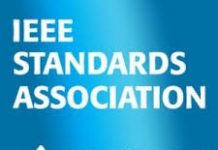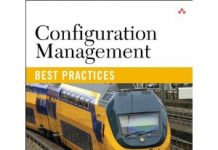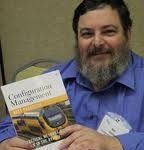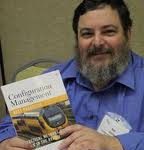We provide courses courses on DevOps, Configuration Management, and Agile Application Lifecycle Management.
Configuration Management: Robust Practices for Fast Delivery
(See outline below)
Configuration management (CM) best practices are essential for creating automated application build, package and deployment to support agile (and non-agile) application integration and testing demands, including rapidly packaging, releasing, and deploying applications into production. Classic CM—identifying system components, controlling changes, reporting the system’s configuration, and auditing—won’t do the trick anymore. Bob Aiello presents an in-depth tour of a more robust and powerful approach to CM consisting of six key functions: source code management, build engineering, environment management, change management and control, release management, and deployment, which are the prerequisites for continuous delivery and DevOps. Bob describes current and emerging CM trends—support for agile development, container-based deployments including Docker, cloud computing, and mobile apps development—and reviews the industry standards and frameworks available in practice today. Take back an integrated approach to establish proper IT governance and compliance using the latest CM practices while offering development teams the most effective CM practices available today.
Continuous Delivery: Rapid and Reliable Releases with DevOps
DevOps is an emerging set of principles, methods, and practices that enables the rapid deployment of software systems. DevOps focuses on lowering barriers between development, testing, security, and operations in support of rapid iterative development and deployment. Many organizations struggle when implementing DevOps because of its inherent technical, process, and cultural challenges. Bob Aiello shares DevOps best practices, starting with its role early in the application lifecycle and bridging the gap with testing, security, and operations. Bob explains how to implement DevOps using industry standards and frameworks such as ITIL v3 (IT Service Management) in both agile and non-agile environments, focusing on automated deployment frameworks that quickly deliver value to the business. DevOps includes server provisioning essential for cloud computing in what is becoming known as Infrastructure as Code. Bob equips you with practical and effective DevOps practices—automated application build, packaging, and deployment—essential for meeting today’s business and technology demands.
Agile ALM: Using DevOps to Drive Process Improvement
Many organisations struggle to improve their existing IT processes to drive their software and systems development work. This leaves technology managers and teams to use whatever worked for them on the last project, often resulting in a lack of integration and poor communication and collaboration across the organisation. Agile application lifecycle management (ALM) is a comprehensive approach to defining development and operations processes that are aligned with agile methodology. Bob Aiello explores how to use DevOps principles and practices to drive the entire process improvement effort—establishing agile practices such as continuous integration and delivery that integrates with the IT operations controls. Learn how to use DevOps approaches to iteratively define a pragmatic and real-world ALM framework that will evolve, scale, and help your organisation achieve its software and business goals. Take back a template to define and automate your application lifecycle, accounting for all stakeholders and integrating their processes into a comprehensive agile ALM framework.
Outline of CM Best Practices Class:
Configuration Management Best Practices Training Program
Introduction:
Based upon industry standards and frameworks this course introduces the technology professional to all of the principles, concepts and hands-on best practices necessary to establish a comprehensive configuration and release management functions. Discussing both CM as it is practiced in product companies and IT organizations, Bob Aiello and Leslie Sachs provide expert guidance on establishing configuration management best practices.
- Configuration Management Concepts
* Configuration Identification
* Status Accounting
* Change Control
* Configuration Auditing (physical and functional) - Source Code Management
* Baselines
* Sandboxes and Workspaces
* Variant Management
* Handling bugfixes
* Streams
* Merging
* Changesets - Build Engineering
* Versions IDs and branding executables
* Automating the build
* Build tools to choose from including Ant, Maven, Make and MS Build
* Role of the Build Engineer
* Continuous Integration - Environment Configuration
* Supporting Code Promotion
* Implementing Tokens
* Practical use of CMDBs
* Managing Environments - Change Control
* Types of Change Control
* Rightsizing the Change Control Process
* The 29 minute Change Control Meeting
* Driving the Process Through Change Control - Release Management
* Packaging the release
* Ergonomics of Release Management
* RM as coordination
* Driving the RM Process - Deployment
* Staging the release
* Deployment frameworks
* Traceability - Architecting Your Application for CM
* CM Driven Development
* How CM Facilitates Good Development
* Build Engineering as a Service - Hardware CM
* Managing Hardware Configuration Items
* Hybrid hardware/software CM - Process Engineering (Rightsizing)
* Agile/Waterfall
* Hybrid Approaches
* Agile Process Maturity - Establishing IT Governance
* Establishing IT Governance
* Transparency
* Improving the Process - What you need to know about Compliance
* Common Compliance Requirements
* Establishing IT Controls - Standards and Frameworks
* What you need to know about standards and frameworks - CM Assessments
* Evaluating the Existing CM Practices
* Documenting “As-Is” and “To-Be”
* Writing your CM Best Practices Implementation Plan
About the Instructor:
Bob Aiello, CM Best Practices Consulting
Bob Aiello is a consultant and author with more than thirty years of experience as a technical manager at leading financial services firms, with company-wide responsibility for CM, ALM and DevOps. He often provides hands-on technical support for enterprise source code management tools, SOX/Cobit compliance, build engineering, continuous integration, and automated application deployment. He serves on the IEEE Software and Systems Engineering Standards Committee (S2ESC) management board, is the current chair of the IEEE P2675 DevOps Working Group and served as the technical editor for CM Crossroads for more than 15 years. Bob is also editor of the Agile ALM DevOps journal, coauthor of Configuration Management Best Practices (Addison-Wesley, 2010) and his latest book Agile Application Lifecycle Management – Using DevOps to Drive Process Improvement (http://agilealmdevops.com).
















